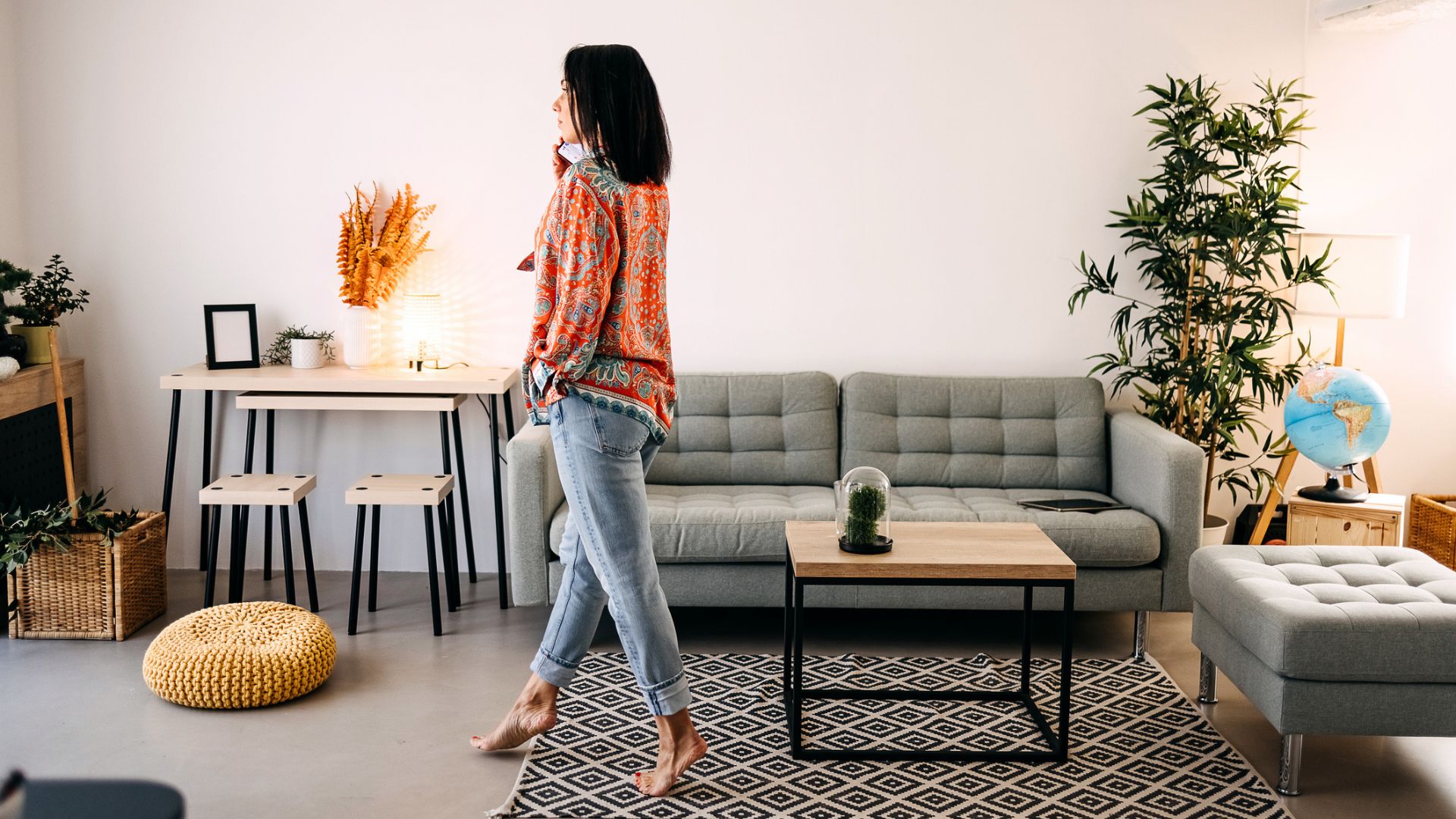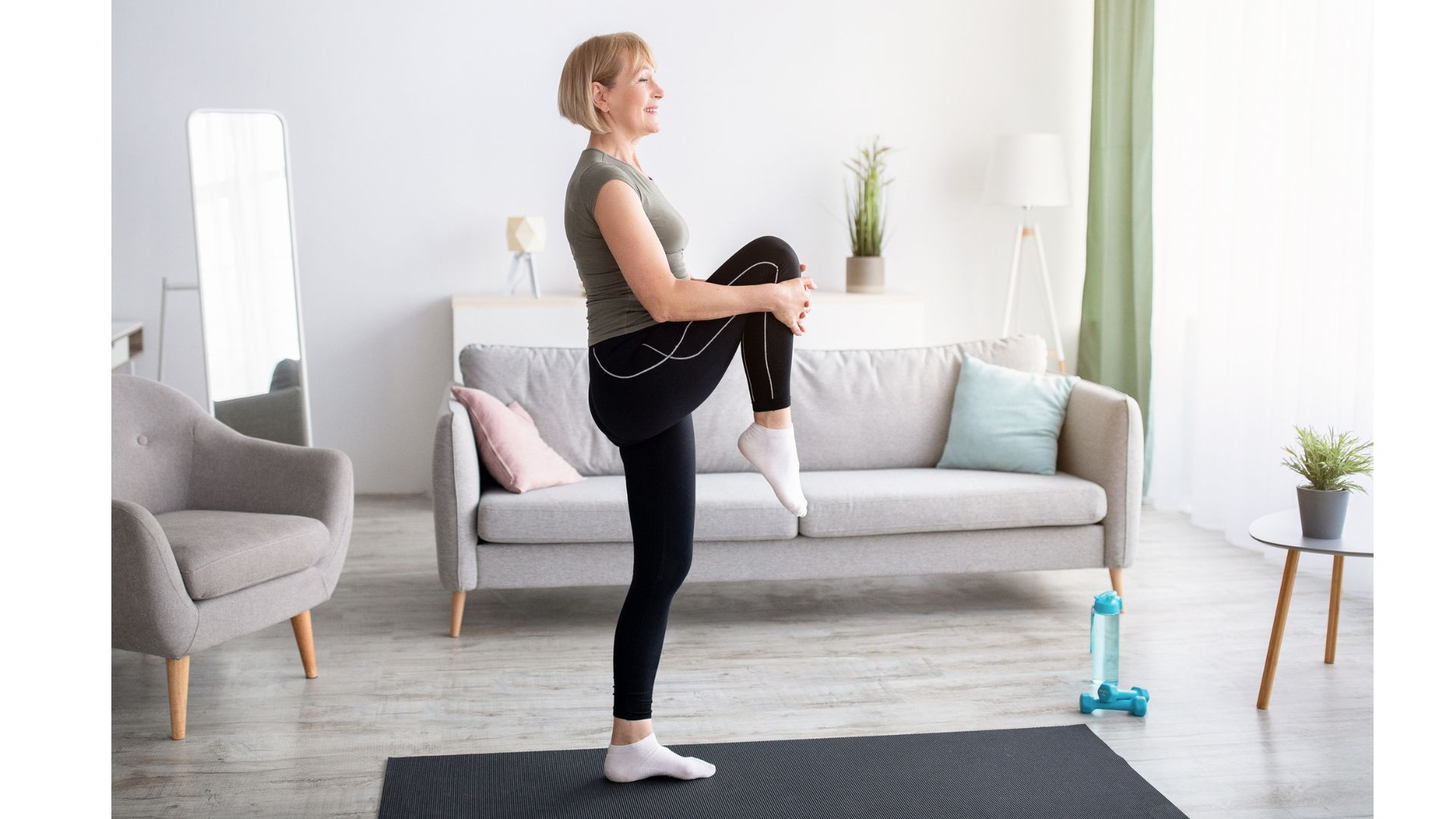
How long can you stand on one leg? According to a new study, it may be one of the better ways to determine how well you're ageing.
Whether it's testing our metabolic age with lifestyle questionnaires or fitness age with on-wrist technology, many of us are eager to know more than the candles on our birthday cake can tell us about how well our bodies are ageing.
Previous studies have examined muscle strength and gait to determine how well people are ageing. However, scientists at the Mayo Clinic now suggest that how long someone can stand on one leg is a better ageing test. It's also easy, free, and possible to do yourself at home.
For the study published in the PLoS One journal, the scientists studied 40 healthy and independent people, half under and half over 65, specifically looking at their knee strength, grip strength, balance, and walking abilities.
In one of the tests, the participants stood on plates in different ways for 30 seconds. In one, they stood with both feet on the plate, eyes open. In another, they stood with both feet on the plate but their eyes were closed. In a third test, they stood on the non-dominant leg with their eyes open, and in the fourth, they stood on their dominant leg with their eyes open.
When standing on one leg, they were allowed to hold the other in whichever way they preferred.
In other tests, the scientists examined grip strength using a customised device. They studied knee strength with a seated test where the participants had to extend each leg as forcefully as possible. To study gait, the participants were tested as they walked eight metres back and forth.
After all the tests, the study concluded that standing on one leg - particularly the non-dominant leg - was the best way of measuring decline with age. Those who were unable to stand on their non-dominant leg were more at risk of age-related decline, including the risk of falling over.
"The duration an individual, whether male or female, can maintain balance on one leg emerges as the most reliable determinant of aging, surpassing strength, gait, and other balance parameters," the study's lead authors concluded.
"Changes in balance are noteworthy," said Kenton Kaufman, the study's senior author. "If you have poor balance, you're at risk of falling whether or not you're moving. Falls are a severe health risk with serious consequences."
Previously, studies have found that good muscle strength and an efficient gait can help people stay mobile in their later years. While maintaining these - via strength training for women, for instance - is important, loss of balance is one of the key causes of falls among those over 65. Maintaining these three pillars of health is one way to prevent them.

How to do the test at home
Our balance starts to decline at 50, studies show, which is also when the risk of falling increases. Not being able to stand on a single leg for five seconds is a significant sign that someone may be at risk for a fall, Kaufman warns.
Being able to stand on one leg shows that the vision, inner ear, and neurological systems are working well. A good test for this, the scientist says, is "putting your trousers on in the morning".
But you could also try this exercise to see how good your balance is at home...
- Find a spot of stable flooring close to a wall or chair for support, should you need to steady yourself.
- Stand on your non-dominant leg (i.e. the leg you feel the least confident on) with your other leg held up behind your waist or bent in front of you - whichever is most comfortable.
- Start a timer or count the seconds on a clock.
- Try to stand unsupported on one leg for at least 30 seconds.
Other types of exercise, such as yoga for beginners and full-body Pilates can also help improve balance, flexibility, and agility.
If you can do this easily, close your eyes and see how long you can stay balanced on one leg. The study also found that while everyone could balance on two feet with their eyes open, older participants tended to sway more - particularly when their eyes were closed, showing a strong connection between balance and vision.







